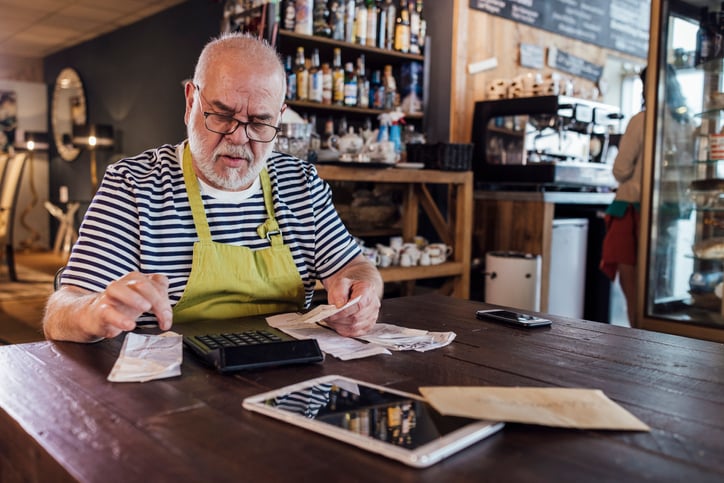As we head into 2024, the marketing world is rapidly evolving, with businesses increasingly integrating innovative technologies into their strategies. A staggering 90% of companies are set to boost their investment in artificial intelligence, reflecting the growing importance of digital marketing in contemporary business.
This year marks a blend of traditional tactics and groundbreaking technologies, with programmatic advertising and short-form video content leading the charge in digital engagement. The rise of AI and augmented reality is also revolutionizing the marketing landscape, offering personalized and immersive experiences that enhance brand awareness and customer interaction.
Join us as we explore these pivotal marketing trends that are reshaping the way businesses connect with customers, focusing on the transformative impact of everything from social media to sustainable and ethical marketing.
1. Social media evolution
As we enter 2024, the social media landscape continues to undergo transformative changes, providing new ways for businesses to connect with their audiences. This year is marked by a significant shift towards authenticity and deeper, more personalized engagement. Social platforms such as Facebook Messenger and Instagram are at the forefront, enhancing the impact of conversational marketing and transforming social commerce into an intimately personal experience. Here are five key trends shaping this evolving space:
- Authenticity and user-generated content: Audiences are gravitating towards content that feels genuine and relatable. This year, expect a surge in user-generated content, as it fosters trust and establishes a sense of community around a brand.
- Rise of short-form video: Platforms like TikTok and Instagram Reels have popularized short-form video content. This format's ability to quickly engage and entertain is proving indispensable for capturing audience attention.
- Increased use of conversational marketing: Tools like Facebook Messenger and WhatsApp Business are enabling businesses to have real-time, personalized interactions with their customers, enhancing the customer experience.
- Social commerce growth: The integration of e-commerce features within social media platforms is streamlining the shopping experience, making it easier for users to purchase directly through social media.
- Greater focus on stories and ephemeral content: Content that disappears after a short period, like Instagram and Facebook Stories, is gaining traction for its immediacy and engaging nature. By tapping into consumers’ fear of missing out (FOMO), this type of content heightens their perceived risk of missing vital information, which leads to greater attention, longer viewing times, and sharper focus on the content. These effects enhance content comprehension and recall, foster more positive attitudes, and improve the efficiency of sponsored content placement on social media platforms.
While the evolution of social media marketing offers exciting opportunities, adapting effectively to these trends can be particularly challenging for smaller businesses with limited resources. To navigate this landscape successfully, consider these practical strategies:
- Embrace authenticity in content creation: Encourage customers to share their experiences with your products or services. Showcase behind-the-scenes content to build a more personal connection with your audience.
- Leverage short form video: Create engaging, concise videos that highlight your offerings or share tips related to your industry. Participate in trending challenges or use popular music to increase the visibility of your content.
- Utilize conversational marketing tools: Implement chatbots on platforms like Facebook Messenger to provide instant customer service. Use these platforms to send personalized offers or updates to customers.
- Integrate social commerce: Set up a shop on platforms like Instagram and Facebook to allow direct purchases. Use shoppable posts and tags to make the buying process seamless for your customers.
- Make the most of ephemeral content: Use stories to share limited-time offers or flash sales. Post interactive content like polls or Q&A sessions to engage with your audience and gather feedback.
By staying up-to-date with these marketing trends and adapting strategies accordingly, businesses can effectively harness the power of social media to connect with their audience, build brand loyalty, and drive growth in 2024. While social media trends offer new engagement pathways, let's next explore how AI and machine learning are also revolutionizing marketing strategies.
2. AI and machine learning in marketing
Artificial intelligence (AI) in marketing has transcended its initial role of merely analyzing data to now playing a pivotal role in shaping marketing strategies and customer experiences. In 2024, AI is not just a tool; it's a game-changer in creating predictive models for better decision-making and crafting highly personalized customer journeys. Here’s how two companies found success with AI-driven marketing:
Enhanced customer service: Sephora
- The challenge: Sephora sought to enhance online shopping experiences by making them more interactive and personalized.
- The AI solution: Sephora introduced a “Virtual Artist” feature using augmented reality and AI. This tool allowed customers to virtually try on makeup products using their device's camera.
- The outcome: The AI-driven tool offered a personalized, engaging experience for users, leading to higher conversion rates and positive customer feedback. It bridged the gap between online and in-store shopping, making it a pioneering effort in the beauty industry's digital transformation.
Predictive analytics in retail: Walmart
- The Challenge: Walmart sought to optimize inventory management and enhance customer shopping experiences.
- The AI Solution: They deployed AI-driven predictive analytics to forecast demand, optimize stock levels, and personalize shopping experiences.
- The Outcome: This led to more efficient inventory management, reduced wastage, and improved customer satisfaction. It also played a key role in Walmart's e-commerce growth, showing a significant increase in online sales.
These case studies exemplify the transformative power of AI in marketing. By leveraging AI for enhanced customer service, data-driven strategies, and predictive analytics, these companies have set benchmarks for success in digital marketing. But how can smaller businesses also leverage the power of AI and machine learning to open new avenues for innovation and growth? Let’s find out.
Bridging AI and machine learning to small and mid-sized businesses
The success stories of large corporations like Sephora and Walmart highlight the transformative power of AI in marketing. Luckily, the principles and tools of AI-driven marketing are more accessible and adaptable than ever for businesses of all sizes.
Below, we’ll explore how smaller businesses might use AI and machine learning to enhance their marketing efforts.
Example 1: A local coffee shop
- Personalized customer engagement: A small coffee shop can implement an AI-driven loyalty app. This app could track customer preferences, such as their favorite drinks or past orders, and offer personalized discounts or recommendations. For instance, if a customer frequently orders a cappuccino, the app could suggest trying a new seasonal espresso blend.
- Social media insights: Using basic AI tools, the coffee shop can analyze social media trends and customer feedback to understand popular flavors or desired menu additions. This insight could guide the introduction of new products or specials directly in line with customer preferences and provide valuable information for brand monitoring.
- Inventory management: AI can help in predicting busy periods and managing inventory more efficiently. By analyzing sales data, the coffee shop can ensure that they are well-stocked for peak times, reducing waste and improving profitability.
Example 2: A mid-sized marketing agency
- AI-driven content strategies: For a marketing agency, AI tools can analyze client data to identify the most effective content types and channels. For instance, if data shows that short-form video content performs well for a particular client's audience, the agency can focus more resources on developing such content.
- Predictive analytics for campaign success: The agency can use AI to forecast the success of different marketing strategies for their clients. By analyzing past campaigns, AI can predict which strategies might yield the best ROI, allowing for more targeted and effective campaign planning.
- Enhanced customer segmentation: AI can assist in creating detailed customer segments based on behavior, preferences, and demographics. This segmentation enables the agency to create highly personalized marketing campaigns for its clients, improving engagement and conversion rates.
- Automated reporting and insights: AI tools can automate the process of data collection and reporting, providing real-time insights into campaign performance. This automation saves time and allows the agency to make quick, data-driven decisions.
AI and machine learning offer opportunities to enhance customer experiences, optimize operational efficiency, and make data driven marketing decisions. The key is to start small, focusing on one or two areas where AI can make a significant impact, and gradually expand its use as comfort and familiarity with the technology grow.
Beyond the realms of AI and digital innovation, there's a growing emphasis on sustainable and ethical marketing practices.
3. Sustainable and ethical marketing
In the current business landscape, sustainability has evolved from a niche concern to a central element of brand identity. This shift reflects a broader societal movement towards environmental consciousness and social responsibility. Today's consumers are not just passive buyers; they are informed individuals deeply concerned about the ecological footprint and ethical practices of the brands they support. This heightened awareness has led to a substantial increase in demand for sustainably produced products and services.
A survey by Nielsen revealed that 73% of global consumers would be more likely to change their consumption habits to reduce their environmental impact. This trend indicates a clear message for businesses: sustainability is no longer optional but a crucial aspect of staying relevant and appealing to a conscientious customer base.
To integrate sustainability effectively in marketing, businesses can adopt the following multi-faceted approach:
- Embed eco-friendly practices: Implement sustainable operations, like responsible material sourcing, waste minimization, and carbon footprint reduction.
- Engage in transparent communication: Share your sustainability journey, including successes and areas for improvement, with customers to build trust and loyalty.
- Highlight sustainable aspects in marketing: Promote eco-friendly product features or contributions to environmental conservation in marketing campaigns.
- Collaborate with environmental organizations: Enhance sustainability efforts and visibility through partnerships.
- Embrace digital marketing: Adopt digital strategies to reduce the environmental impact of traditional marketing materials.
- Encourage customer participation: Involve customers in sustainability initiatives like recycling programs or community clean-ups to strengthen community bonds.
Ultimately, integrating sustainability into marketing is not just about promoting eco-friendly products; it's about embodying and communicating a commitment to a better, more sustainable future in every aspect of business operations. With sustainability shaping brand identities, another key trend in 2024 is the rise of advanced personalization in marketing.
4. Personalization at scale
2024 marks a significant evolution in marketing personalization techniques. This era goes beyond the basics of using a customer’s name in communications and involves creating distinct, individualized experiences for each customer. Advanced personalization involves understanding the nuances of customer behavior, preferences, and even emotions.
Role of AI and machine learning
As we’ve discussed, technologies like AI and machine learning are at the forefront, analyzing vast amounts of data to discern patterns and preferences unique to each customer. For example, e-commerce platforms are using advanced algorithms to not only recommend products based on past purchases but also to predict future needs and suggest items before the customer even realizes they need them. Another technique involves personalizing website experiences in real-time, changing layouts, and dynamically changing content based on the user's browsing behavior and history. This level of personalization ensures that each interaction with the brand is relevant, engaging, and tailored to the individual, thereby enhancing the customer experience and increasing brand loyalty.
Crafting hyper-personalized experiences
In 2024, the ability to deliver hyper-personalized experiences hinges on the strategic use of data. Brands are tapping into various data sources—from browsing history and purchase records to social media interactions and location data—to gain a 360-degree view of their customers. This data is then analyzed to create highly detailed customer profiles, enabling brands to tailor their messaging, offers, and even product development to meet the specific needs and preferences of each segment.
Advancements in targeted communication
Brands are using predictive analytics to anticipate customer needs and proactively offer solutions, thereby enhancing the customer journey. Retailers, for example, are sending out targeted promotions for products that customers are likely to need based on their past purchasing trends and seasonal factors. The key, however, is to leverage customer-provided information in a relevant and balanced approach to avoid overstepping and intrusion.
By leveraging data in such strategic ways, brands are not only improving the effectiveness of their marketing efforts but are also creating deeper and more meaningful connections with their customers.
5. Voice search and SEO
Did you know that 71% of consumers prefer to ask a voice search query rather than type? As voice search increasingly becomes a key player in SEO, businesses must adapt to remain visible and relevant. Preparing for this shift involves several key steps:
- Understand user intent: Recognize that voice searches are often more conversational and question-based compared to text searches. Focus on the intent behind queries and how your audience might use voice search to find your products or services.
- Mobile optimization: Given that most voice searches are performed on mobile devices, ensure your website is fully optimized for mobile users. This includes fast loading times, responsive design, and easy navigation.
- Local SEO emphasis: Many voice searches are local in nature, like searching for nearby services or establishments. Make sure your local SEO is robust, including accurate listings on Google My Business and other directories.
Optimizing content for voice search algorithms requires a nuanced approach that caters to the unique nature of spoken queries:
- Use of natural language: Craft content that matches the conversational tone of voice search. Include long-tail keywords and phrases that people are likely to speak rather than type.
- Structured data and schema markup: Implement structured data on your website. This helps search engines understand the context of your content, making it more likely to be featured in voice search results.
- FAQ sections: Develop comprehensive FAQ sections on your website. They naturally align with the question-and-answer format prevalent in voice searches and can boost your chances of appearing in voice search results.
- Featured snippet optimization: Aim to provide clear, concise answers in your content that could be picked up as featured snippets. These are often used by voice assistants to answer queries directly.
By focusing on these areas, businesses can ensure they are well-equipped to face the rising tide of voice search, enhancing their visibility and accessibility in an increasingly voice-driven digital landscape. Alongside voice search advancements, VR and AR technologies are also creating groundbreaking opportunities in marketing.
6. Virtual reality and augmented reality in marketing
Virtual and Augmented Reality (VR and AR) are reshaping the marketing landscape with their ability to create deeply immersive experiences. These technologies allow customers to engage with products and brands in a highly interactive and engaging manner. The potential of VR and AR in marketing lies in their ability to:
- Create immersive experiences: Transport customers to virtual environments where they can interact with products or services in a lifelike setting.
- Enhance product demonstrations: Allow customers to virtually try products, from clothing to furniture, in a realistic context.
- Boost engagement: Engage customers more deeply than traditional media, making brand messages more memorable.
- Facilitate remote interaction: Enable customers to experience products or services remotely, breaking down geographical barriers.
Several brands have harnessed the power of VR and AR to launch successful marketing campaigns. Notable success stories include:
- IKEA's AR catalog app: This app lets customers visualize how furniture would look in their own homes before making a purchase, significantly enhancing the shopping experience.
- L'Oreal's AR beauty app: Using AR technology, L'Oreal's app allows customers to try on makeup virtually, helping them make purchasing decisions without the need for physical product testing.
- Pepsi Max's unbelievable bus shelter: An AR campaign where London bus commuters experienced extraordinary scenes, like alien invasions, through a bus stop's interactive screen, creating a viral sensation.
- Audi's VR showroom experience: Audi introduced a VR experience in showrooms where customers could customize and interact with a virtual version of their desired car model, providing a deep level of customization and engagement.
While smaller businesses might find implementing such technologies challenging due to resource constraints, there are feasible ways to utilize VR/AR:
- Local collaboration: Small businesses can collaborate with local tech developers or educational institutions for cost-effective VR/AR solutions.
- Augmented reality business cards: Utilize AR to create interactive business cards, offering a novel way for customers to engage with the business.
- Simple VR experiences: Create basic VR experiences like virtual tours of a store or restaurant, which can be developed with more affordable VR tools.
By starting with smaller, more manageable initiatives, small businesses can gradually explore the world of VR/AR marketing and innovate within their means. VR and AR mark a leap in immersive marketing, which aligns with the broader shift towards integrated omnichannel strategies.
7. Omnichannel marketing strategies
In 2024, omnichannel marketing strategies are critical for seamlessly blending online and offline marketing channels. This approach focuses on providing a unified brand experience to customers, regardless of the channel they choose. Integrating these channels involves linking digital efforts like social media, email, and website marketing with traditional methods such as in-store promotions and direct mail. This interconnected strategy ensures that customers receive a consistent message and experience, whether browsing online or visiting a physical store.
To create a seamless omnichannel experience, businesses should adhere to the following best practices:
- Consistent brand messaging: Ensure that all communication, across every channel, conveys a consistent brand message and ethos.
- Unified customer service: Offer a cohesive customer service experience, whether the customer interacts online, over the phone, or in person.
- Data integration: Leverage customer data from both online and offline interactions to provide personalized experiences.
- Channel flexibility: Allow customers to move smoothly between channels, such as picking up online orders in-store or accessing online customer reviews while shopping physically.
Implementing these practices helps in building a smooth, integrated journey for the customer, enhancing satisfaction and brand loyalty. As we unify marketing channels, let's pivot to the critical role of data-driven decision-making in shaping these strategies.
8. Data-driven decision making
The role of data analytics in marketing is becoming increasingly pivotal in 2024 and beyond. This era is characterized by an overwhelming influx of data from various digital touchpoints, making sophisticated data analysis not just a trend, but a fundamental aspect of marketing strategy. The future of data analytics lies in its ability to offer deep insights into customer behavior, market trends, and the effectiveness of marketing campaigns, thus enabling businesses to make more informed decisions, tailor their marketing efforts, and stay agile in a rapidly changing market environment.
In this landscape, the tools and techniques for data interpretation have become more advanced and accessible. Marketers now have a range of tools at their disposal, from the ubiquitous Google Analytics and Google Trends to more specialized AI-driven platforms, that can process large sets of data for detailed insights. These tools can segment audiences, predict consumer behavior, and measure campaign effectiveness. Additionally, techniques like machine learning and predictive analytics are being increasingly employed to interpret complex data sets, providing marketers with the foresight to anticipate market changes and customer needs, thereby crafting more targeted and effective marketing strategies and reaching an even greater number of potential customers.
Embracing the future: leading with innovation in 2024's marketing landscape
As we look ahead to the marketing trends of 2024, it's clear that the fusion of technology, personalization, and ethical practices is key to connecting with audiences. For marketers and businesses, embracing these trends is not just about staying relevant; it's about leading the charge in a dynamic digital landscape.
At Nextdoor, we understand the importance of these developments and are committed to connecting businesses and communities so they can thrive together in this exciting new era of marketing. The Nextdoor Ads Manager helps businesses grow by building real relationships with high-value, high-intent audiences through powerful targeting options. Get started and lead with innovation today!
Sources:
- Barnea, U., Meyer, R. J., & Nave, G. The Effects of Content Ephemerality on Information Processing. https://doi.org/10.1177/00222437221131047
- Digital Commerce 360. Walmart Online Sales Q1 2023. https://www.digitalcommerce360.com/2023/05/18/walmart-online-sales-q1-2023/
- Future Stores. L'Oreal Augmented Reality & Virtual Reality In-Store Experience Strategy. https://futurestores.wbresearch.com/blog/loreal-augmented-reality-virtual-reality-in-store-experience-strategy
- Harvard Business Review. Ads That Don't Overstep. https://hbr.org/2018/01/ads-that-dont-overstep
- NielsenIQ. A Natural Rise in Sustainability Around the World. https://nielseniq.com/global/en/insights/analysis/2019/a-natural-rise-in-sustainability-around-the-world/
- PR Newswire. New Invoca AI Benchmark Report Finds Marketers are Bullish on AI but Overconfident in Their Skills. https://www.prnewswire.com/news-releases/new-invoca-ai-benchmark-report-finds-marketers-are-bullish-on-ai-but-overconfident-in-their-skills-301987650.html
- Retail Dive. Ikea Takes its Product Catalog Mobile with Augmented Reality App. https://www.retaildive.com/ex/mobilecommercedaily/ikea-takes-its-product-catalog-mobile-with-augmented-reality-app
- Road to VR. Audi Has Deployed 1000 VR Showrooms in Dealerships Worldwide. https://www.roadtovr.com/audi-has-deployed-1000-vr-showrooms-in-dealerships-worldwide/
- Search Engine Journal. Voice Search Optimization: SEO & WebCEO. https://www.searchenginejournal.com/voice-search-optimization-seo-webceo/446158/
- Sprout Social. User-Generated Content Guide. https://sproutsocial.com/insights/user-generated-content-guide/
- Tech Republic. How Sephora is Leveraging AR and AI to Transform Retail and Help Customers Buy Cosmetics. https://www.techrepublic.com/article/how-sephora-is-leveraging-ar-and-ai-to-transform-retail-and-help-customers-buy-cosmetics/
- The Verge. Pepsi Bus Stop Ad Augmented Reality. https://www.theverge.com/2014/3/25/5545842/pepsi-bus-stop-ad-augmented-reality
- Walmart Global Tech. Walmart's AI-Powered Inventory System Brightens the Holidays. https://tech.walmart.com/content/walmart-global-tech/en_us/news/articles/walmarts-ai-powered-inventory-system-brightens-the-holidays.html







